For The Latest Medical News, Health News, Research News, COVID-19 News, Pharma News, Glaucoma News, Diabetes News, Herb News, Phytochemical News, Thailand Cannabis News, Cancer News, Doctor News, Thailand Hospital News, Oral Cancer News, Thailand Doctors
The body requires a number of minerals in order to maintain its proper functioning.
The minerals are used for a variety of physiological processes such as building blood and bone, making hormones, regulating heartbeat, and more.
There are two types of minerals.
Macrominerals are needed in large amounts. Trace minerals are needed in very small amounts.
The macrominerals are calcium, phosphorus, magnesium, sodium, potassium, chloride, and sulfur.
The trace minerals are iron, manganese, copper, iodine, zinc, cobalt, fluoride, and selenium.
Calcium is the most abundant mineral in the body. It is used structurally, to build bones and teeth, and also as a messenger in cell signaling.
In addition to forming the primary structure of our body, the bones also serve as a calcium reserve in case of dietary deficiency.
Dietary calcium is therefore extremely important to prevent loss of bone. Calcium balance is maintained by parathyroid hormone.
The US recommended daily allowance of calcium is 1000-1200 mg/day for adults.

Phosphorus forms a part of the bones in the form of the mineral hydroxyapatite. It is also used in cell membranes, and is part of the energy molecules, adenosine triphosphate (ATP) and adenosine diphosphate (ADP). DNA and RNA also contain phosphate.
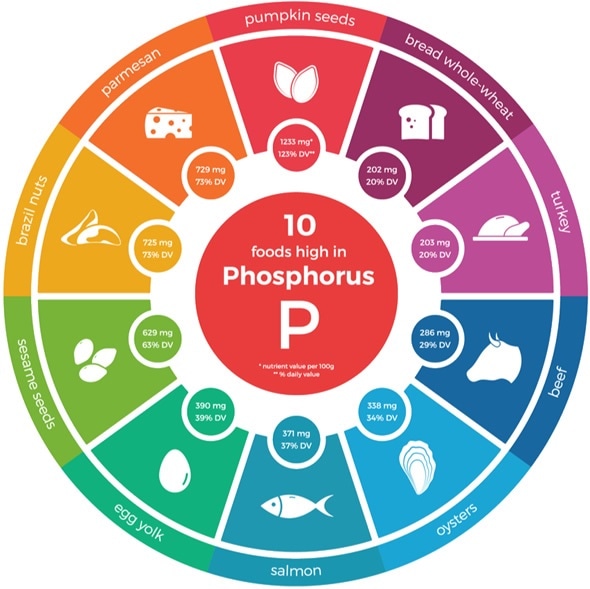
The RDA of phosphorus is 700 mg for adults. Phosphorus is abundant in most food sources.
Magnesium is widely used by the body for metabolic processes. Some of its main functions include energy production, synthesis of biomolecules, and as a structural component of cell membranes and chromosomes.
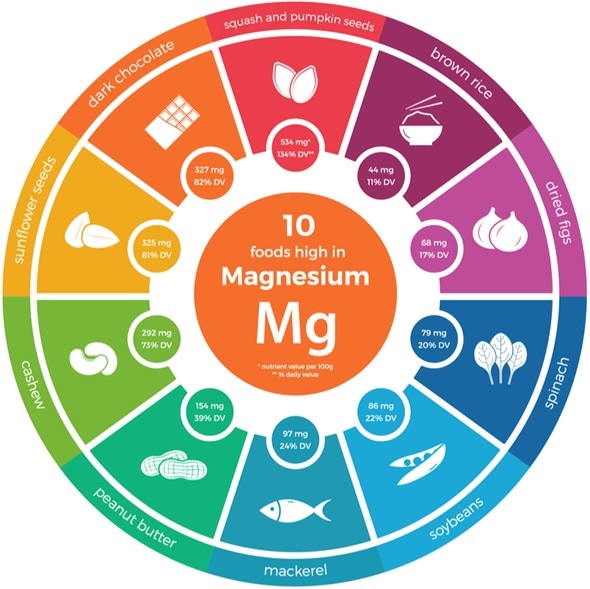
Magnesium is also used in ion transport, cell signaling, and cell migration. The RDA for magnesium is 400-420 mg for men and 310-320 mg for women.
Sodium and chloride are critical life-sustaining minerals. Sodium chloride (salt) is a required part of the diet. With potassium, sodium and chloride maintain charge gradients across cell walls.
Sodium helps to maintain proper blood volume and blood pressure. Most adults require between 1.5 and 3.8 grams of sodium chloride per day.
In addition to acting as an electrolyte in the body, potassium also functions as a cofactor for a number of enzymes. Low potassium levels can be dangerous, resulting in fatigue, muscle cramps, and abdominal pain. Adults need about 4.7 grams of potassium per day.
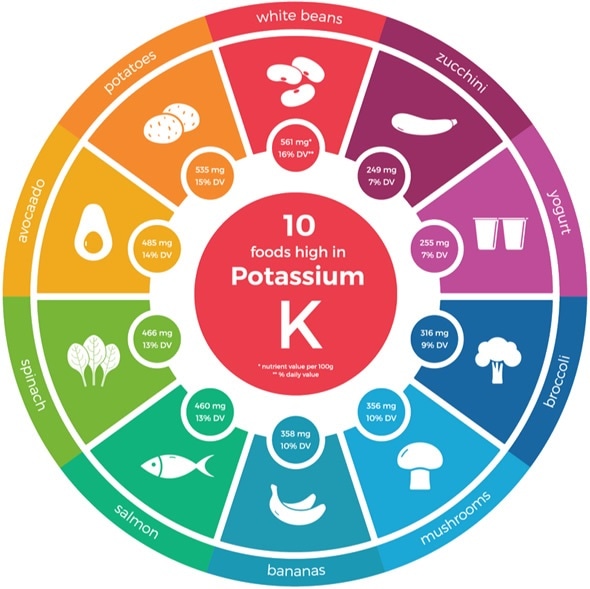
Sulfur is an important component of two amino acids, cysteine and methionine, that are used in most proteins of the body.
Because sulfur is abundant in nature, it is not usually classed as a required nutrient in the diet.
Iron is used in red blood cells to carry oxygen to the tissues, and is also a critical component of many metabolic proteins and enzymes.
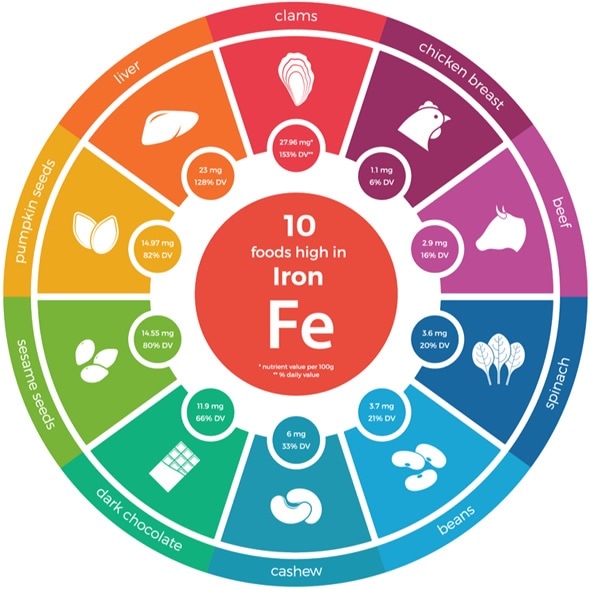
Heme iron is bound within a ring-like molecule called porphyrin. Heme iron is present in red blood cells.Iron is found in the body in the form of heme iron and non-heme iron.
Non-heme iron such as iron-sulfur cluster proteins are used in energy production and other metabolic functions. The RDA of iron for men is 8 mg, for women 18 mg, and for pregnant women 27 mg.
The functions of manganese include antioxidant activity in the mitochondria, assisting enzymes in metabolism, bone development, and wound healing.
Adequate daily intake of manganese is 2.3 mg for men and 1.8 mg for women. Deficiency of manganese can lead to osteoporosis, diabetes, and epilepsy.
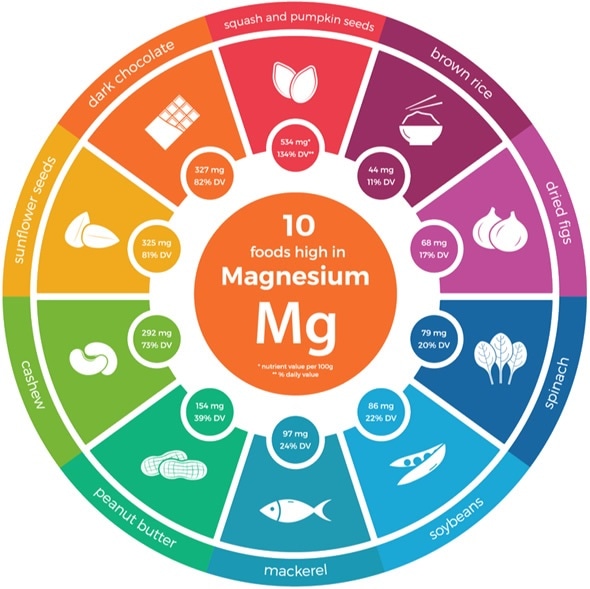
Copper is a cofactor for certain enzymes involved in energy production, connective tissue formation, and iron metabolism.
Copper deficiency can be caused by poor nutrition, poor absorption, or excessive zing intake.
The US RDA of copper is 800 micrograms for adults. Copper is found in shellfish, nuts, seeds, and whole grains.
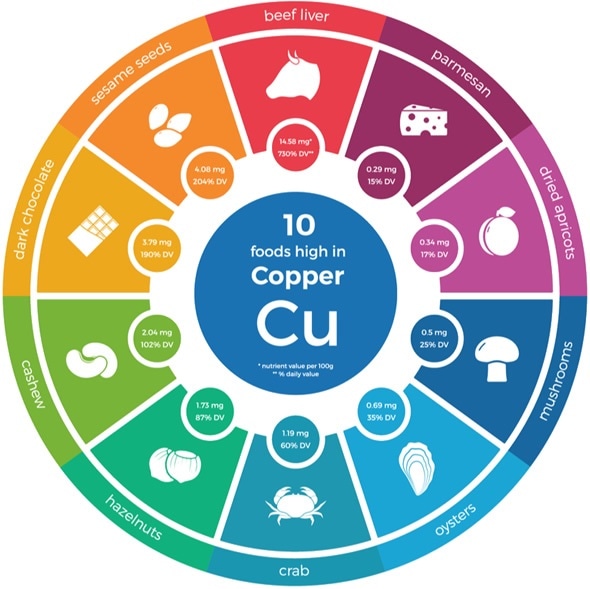
Iodine is a critical mineral in the body. It is a component of the thyroid hormone and is required for normal thyroid function.
Iodine is found naturally in seafood, dairy products, grains, eggs, and poultry.
Additionally, in the US and many other countries, salt is fortified with iodine to prevent deficiencies in the population.
Iodine deficiency can cause brain damage, mental retardation, hypothyroidism, goiter, and other health problems. The US RDA of iodine is 150 micrograms.
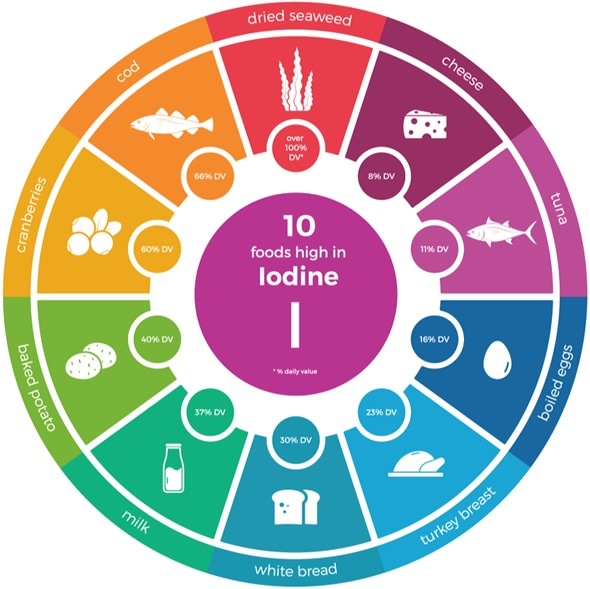
Zinc plays multiple roles in the body. It is involved in many cellular metabolic processes and is used in growth and development, the immune system, neurological function, and reproduction.
It also forms a structural part of cell membranes and is a component of the zinc finger proteins, which act as transcription factors.
The US RDA for zinc is 11 mg for men and 8 mg for women.
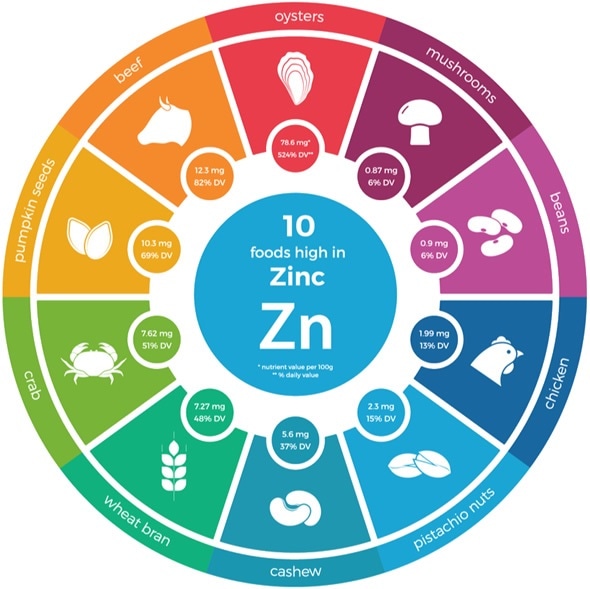
Cobalt is present in the body as a part of vitamin B12, which is involved in manufacture of blood cells and nervous system function.
Fluoride hardens tooth enamel and stabilizes the mineral in bones. Natural sources of fluoride include tea, fish consumed with the bones, and some fruit juices.
However, the major source of dietary fluoride in the US is fluoridated drinking water.
The average fluoride intake per day in areas with fluoridated drinking water is 1.4 to 3.4 mg. In areas without fluoridated water, it is 0.3 to 1 mg per day.
Selenium functions in the body in the form of selenoproteins, which have many metabolic functions.
The US RDA for selenium is 55 micrograms. Foods rich in selenium include Brazil nuts, tuna, oysters, pork, beef, chicken, whole wheat bread, and milk.
Deficiency of selenium does not usually result in obvious clinical illness, but may contribute to Keshan disease and Kashin-Beck disease.